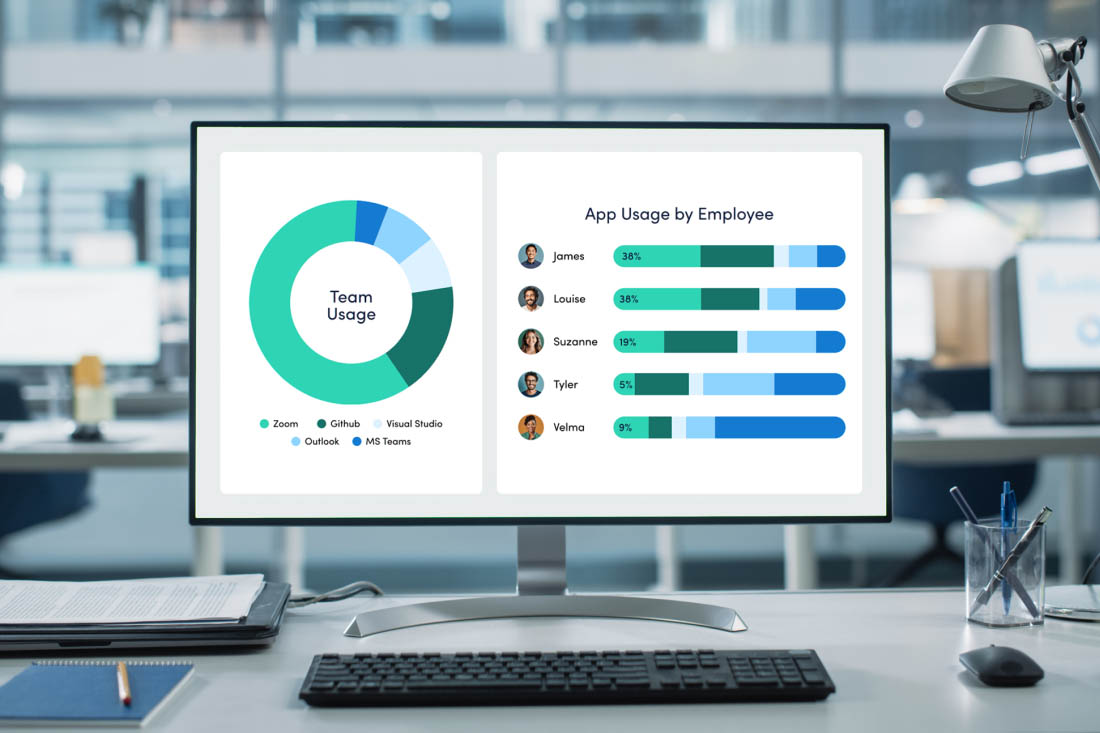Productivity has become a major buzzword in the corporate world in the past few years. Accomplishing tasks efficiently and effectively is crucial for success, both in our personal and professional lives. But many of us struggle with obstacles that hinder our productivity in the workplace.
Below we’ll identify common misconceptions about work and share strategies to improve productivity. We’ll also take you through what can impact productivity, such as physical and mental health, and the role of technology in our quest to perform our best.
1. Poor communication
One of the biggest productivity challenges in the workplace lies in communication. Team members need to talk to each other in order to collaborate and complete tasks. They also need good communication like managerial feedback to understand organizational goals and their place within them. On the other hand, too much communication can overwhelm workers or distract them from getting work done. This is especially important for remote or hybrid teams who may not be able to communicate in person. It’s vital to find ways to implement effective communication without burdening workers with too much – or worse — conflicting information.
How to overcome it:
Organizations help teams communicate better by improving technology and policies. Project management tools help employees keep track of tasks and expectations without having to ping each other constantly for updates. Regular but infrequent meetings and check-ins give employees time to prepare important details for discussion without having to interrupt their work time. Communication tools like direct messaging and video conferencing can fill the gap for teams that can’t talk in person.
2. Low employee engagement
Engaged employees tend to have higher overall productivity than disengaged employees. In fact, Gallup reports organizations with more engaged employees see 18% higher productivity in terms of sales and 23% higher profitability. When employees don’t feel their work matters, they’re more likely to perform poorly or even leave their jobs altogether. They’re also less likely to offer innovative strategies or volunteer for tasks they could excel at.
How to overcome it:
Company culture influences employee engagement, and it starts with leadership. Nurturing relationships within the organization through regular feedback and communication is a good place to start. Managers should help employees understand their roles and how their performance impacts the organization. They should also know how to help employees find their purpose, use their strengths and develop their skills further. ActivTrak’s employee engagement software helps managers understand current engagement levels and identify early signs of burnout in time to take action before it leads to turnover or quiet quitting.
3. Overwork and burnout
It may be counterintuitive, but employees who log long work hours may be less productive than those who don’t. When employees feel overworked, they are often more prone to mistakes, less capable of completing tasks and more likely to reach burnout. They can also affect customer satisfaction and morale within the organization.
How to overcome it:
Businesses use tools like ActivTrak’s workload management software to see how workloads are distributed and to identify employees who may be over- or under-utilized. By understanding workloads, managers can redistribute tasks to help employees struggling with too much on their plates or give additional projects to people with extra time.
4. Lack of recognition or reward
Opportunities for advancement, a raise or bonus, or even just a word of encouragement can be major productivity boosters. Employees who feel that their work is recognized and rewarded are far more likely to continue to do their best work for the organization. They may also help the organization in other ways, such as recommending people in their network apply to open positions or finding innovative ways to solve company problems.
How to overcome it:
Create clear reward structures and communicate them to employees so they know what to expect. Make sure managers let employees know how they can advance in their careers or what opportunities are open to them. Implement ways for employees to communicate gratitude to other team members for a job well done and recognize contributions often. Use data from productivity tracking tools like ActivTrak to spot and reward employees who put in more effort or producing quality results that you may not otherwise notice.
5. Poor training
Employees who don’t properly know how to do their work or use their tools will face productivity challenges. Employees may fear punishment for admitting they don’t know how to use a tool or understand a policy. This can push them to waste time trying to figure the system out on their own or avoiding it altogether.
How to overcome it:
Offer mandatory training at new employee orientation and ongoing training for employees throughout their careers. Never assume employees will intuitively understand new programs or technology, even if the solutions are widely popular or easy to use. You can also implement less official training systems, such as peer mentoring. Teams can work together to educate each other on best practices and how to use the tools they have to ensure everyone can work to their fullest potential.
6. Multitasking and distractions
Another workplace issue affecting productivity levels is multitasking or distractions. While they may seem like separate issues, they’re actually one and the same. Multitasking is actually switching between tasks, meaning an employee’s focus is never fully on one task at a time. Distractions from other coworkers, competing priorities and even personal issues can keep employees from fully meeting their obligations.
How to overcome it:
Implementing time management strategies can help employees minimize distractions and complete their tasks on time and to the best of their abilities. Time blocking is one way employees can block off segments of their day to focus on one thing at a time.
7. Too many meetings
Meetings are a part of modern work life, but when they’re inefficient, they can take away from productivity. If meetings are scheduled on the fly, employees may be taken out of their flow, which can seriously hamper their productivity. Large amounts of weekly recurring meetings can also frustrate employees, especially if the meeting times aren’t coordinated to give employees breaks in between or time to focus on their work. This can add stress and decrease employee morale in the work environment, leading to even worse productivity outcomes.
How to overcome it:
Implement policies that limit meetings and ensure they’re worthwhile. Managers should keep meetings to 30 minutes or less and ensure only necessary staff members are required to attend. Anyone who calls a meeting should provide a clear agenda beforehand so team members know what they need to bring to the meeting and what they’ll get out of it. Employees should be encouraged to have one-on-one or offline discussions with team members when there needs to be more clarification so other workers can use their time more efficiently.
8. Personal issues
Sometimes employees have issues that don’t pertain to their professional lives but will affect their work. Mental and physical health can take a toll on an employee’s productivity. Sometimes these issues are caused by work, which employers may have more control over. But often, employees deal with personal issues outside of work that managers and supervisors don’t control.
How to overcome it:
Offer employees ample ways to deal with personal issues, whether that’s paid time off, flexible work arrangements or employee benefits like counseling or wellness programs. Make sure they feel comfortable asking their managers for help when they need it and that they aren’t punished for taking time to handle issues that can affect their work.
Overcome productivity challenges with ActivTrak
If you’re looking to increase productivity, ActivTrak can help through employee monitoring, productivity tracking and more. Find ways to empower employees to work when, where and how they function best with real-time data and insightful analytics. Spot burnout and imbalanced workloads before they wreak havoc on your organization. Get a free demo to see how ActivTrak can help remove workplace productivity barriers for your company today.





